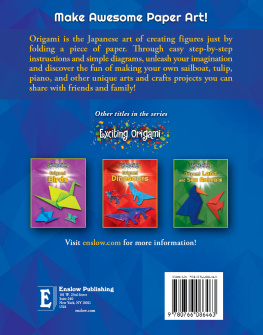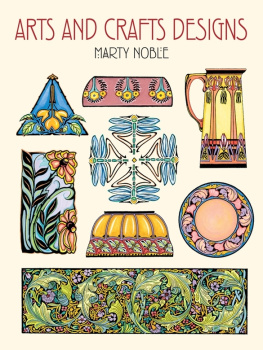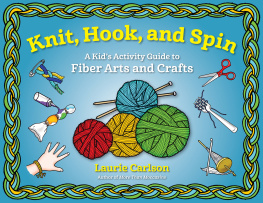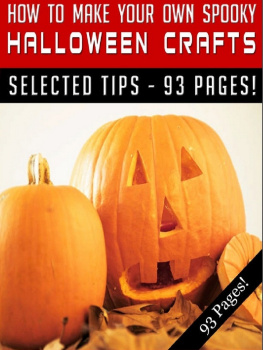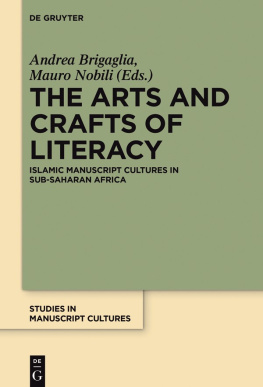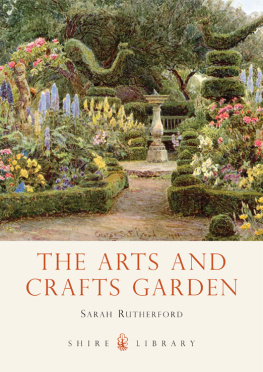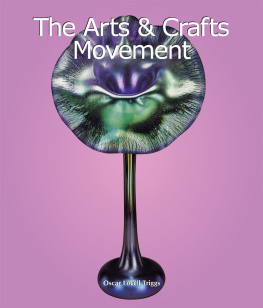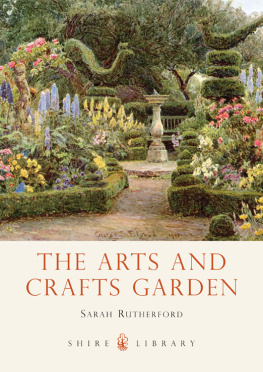Edwin C. Guillet - Pioneer Arts and Crafts
Here you can read online Edwin C. Guillet - Pioneer Arts and Crafts full text of the book (entire story) in english for free. Download pdf and epub, get meaning, cover and reviews about this ebook. year: 1968, publisher: University of Toronto Press, genre: Non-fiction. Description of the work, (preface) as well as reviews are available. Best literature library LitArk.com created for fans of good reading and offers a wide selection of genres:
Romance novel
Science fiction
Adventure
Detective
Science
History
Home and family
Prose
Art
Politics
Computer
Non-fiction
Religion
Business
Children
Humor
Choose a favorite category and find really read worthwhile books. Enjoy immersion in the world of imagination, feel the emotions of the characters or learn something new for yourself, make an fascinating discovery.

- Book:Pioneer Arts and Crafts
- Author:
- Publisher:University of Toronto Press
- Genre:
- Year:1968
- Rating:3 / 5
- Favourites:Add to favourites
- Your mark:
- 60
- 1
- 2
- 3
- 4
- 5
Pioneer Arts and Crafts: summary, description and annotation
We offer to read an annotation, description, summary or preface (depends on what the author of the book "Pioneer Arts and Crafts" wrote himself). If you haven't found the necessary information about the book — write in the comments, we will try to find it.
Pioneer Arts and Crafts describes all aspects of domestic manufactures and processes of pioneer days, tracing the development of wood-working, tanning, spinning and weaving, and exploring cooking and various food processes and recipes.
Pioneer Arts and Crafts — read online for free the complete book (whole text) full work
Below is the text of the book, divided by pages. System saving the place of the last page read, allows you to conveniently read the book "Pioneer Arts and Crafts" online for free, without having to search again every time where you left off. Put a bookmark, and you can go to the page where you finished reading at any time.
Font size:
Interval:
Bookmark:
Related titles in the series
2. The Fur Trade in Canada by Harold Adams Innis
10. The Birth of Western Canada by G F G Stanley
12. Between the Red and the Rockies by Grant MacEwan
13. Champlain by N. E. Dionne
14. The Life and Times of Confederation, 1864-1867 by Peter B. Waite
16. The Great Migration by Edwin C. Guillet
27. Wolfe and Montcalm by H. R. Casgrain
30. Pioneer Days in Upper Canada by Edwin C. Guillet
36. The Englishwoman in America by Isabella Lucy Bird
47. Pioneer Travel by Edwin C. Guillet
48. Sir Guy Carleton by A. G. Bradley, 65. Manitoba: A History by W. L. Morton

by
EDWIN C. GUILLET

First published by the
Ontario Publishing Co., Limited 1940
This edition
University of Toronto Press 1968
To
MARGUERITE GUILLET BROOKS
Designer, Thread Workers Guild of America
This volume was first published in 1940 as one of the Early Life in Upper Canada series for students of Canadian social history. The development since that time of pioneer villages with arts and crafts in action has greatly increased and widened interest in the subject.
Necessity, it is said, is the mother of invention, and our early settlers were ingenious and skilful in providing for their needs in their spare time. The more enterprising engaged in domestic manufactures, and were quick to adopt farm processes brought to their attention at fairs and exhibitions, while their women were equally interested in improved housekeeping and recipes for food and drink.
Prominent among authentic source materials for this book are The Female Emigrants Guide (1854) by that cultured and intrepid pioneer, Catharine Traill; but her brother Sam Strickland and numerous other contemporaries have also been drawn upon in describing ways and means of doing things at a time when perseverance amid discouragement was the rule.
This edition of Pioneer Arts and Crafts has a few small additions and a number of new illustrations.
Edwin C. Guillet
January 1, 1968
PIONEER ARTS AND CRAFTS
T HE Canadian pioneer lived in an age of wood. Many complicated machines and contrivances consisted entirely of wood, though wood may form no part of the machines which do their work in the industries of today. Similarly most of the equipment of the pioneer home was hand-made and of wood. When a door took the place of a blanket or some makeshift covering of the entrance to the log house, its hinges, lock, and latch were often of wood. In describing the experience of a settler in Ops Township in raising his log house in the wilderness, Thomas Conant wrote:
To form a door he split some thin slabs from a straight-grained cedar and pinned them with wooden pins to cross slats. The most ingenious parts of the construction, however, were the hinges. Iron hinges he had not and could not get. With the auger he bored a hole through the end of a square piece of wood, and sharpening the other end with his axe, he then bored a hole into one of the logs of the house, constituting in part a door-jamb, and drove the piece of wood into this hole. This formed the top part of the hinge, and the bottom part was fashioned in exactly the same way. Now to the door in like manner he fastened two pegs of wood with holes bored through their ends. Placing the ends of the hinges above one another, they presented the four ends with holes leading through them, the one above the other. Next he made a long pin with his handy jack-knife, leaving a run at one end of it and making it long enough to reach from the top to the lower hinge. Through the holes at the end of the hinge this long pin was placed, and thus the door was hung.
Wooden pumps are still in co mon use in Ontario, though many farmers have now iron pumps with which water may be forced to various buildings. James B. Scott of Oakland Township, Brant County, who had been making wooden pumps since 1883, used tamarack logs and bored them with a two-inch pod auger. The head of the pump was made of quarter-cut pine. A gasoline engine provided power for the boring, but until 1916 Mr. Scott used a horse to turn the wheel, and some of his early competitors even bored by hand. When he entered the trade there were numerous pump-makers in the district, but at the time of his death in 1941 Mr. Scott was the only one left within a radius of at least fifty miles.

KITCHEN UTENSILS, 1813
Most of them were hand-made in the early period.
Many a pioneer house was flooredif at allwith half logs roughly formed by adze or broad-axe, for smooth boards were available only at sawmills. Some settlers contrived to make boards sufficiently even for partitions by splitting logs known to break with a fairly smooth surface. At times a whipsaw was used, but it was laborious work to saw from end to end of a log, one man standing in a pit with the sawdust falling continually in his eyes as he attempted to keep up with the man above him. Samuel Strickland developed improved methods of slabbing, or splitting planks from pine logs. At one end of an eight-foot log he marked off planks four inches wide, and then split them out with wedges, starting from the outside rather than from the centre. Later he improved his planks by the following process:

COLEBROOK PUMP FACTORY, NEAR NAPANEE
I cut a square notch on the top of two large logs laid nearly the length of my plank apart from each other; I then placed one edge of the plank in the notches, which I wedged firmly. By this method, after lining the upper edge, I was enabled to hew the surface of the plank with my broad axe and reduce it to the proper thickness. As soon as the surface was smoothed I struck a straight line on each side of the plank, which I dressed with my axe, thereby forming a square straight edge easily jointed with the plane. In this manner did I prepare my flooring and partitions, which for a time answered a very good purpose, as roof-battens for shingle on narrow cedar boards are easily split. Those I made were six feet long, and varied from four to eight inches in width and an inch thick. A board of this length reaches across three rafters. (The white cedar splits very freely.) I boarded both ends of my house with planks made in this manner.
Sawmills were at first as scarce as grist-mills. By 1792, however, there were thirteen between the mouth of the Trent River and Long Point, though all of them were in the Niagara district, which at that time contained almost all of the settlers in central Upper Canada. As the years passed, the sawmill was often the nucleus of settlements. Thomas Need, whose sawmill was the beginning of the village of Bobcaygeon, says that the erection of a sawmill is always the first marked event in the formation of a settlement in the Bush. This induces many to come into the neighbourhood, from the facility it offers for building. So the old methods of making planks gave way to machinery, and when a farmer took logs to the mill he usually received back half the boards, the other half being retained by the miller as payment.
Font size:
Interval:
Bookmark:
Similar books «Pioneer Arts and Crafts»
Look at similar books to Pioneer Arts and Crafts. We have selected literature similar in name and meaning in the hope of providing readers with more options to find new, interesting, not yet read works.
Discussion, reviews of the book Pioneer Arts and Crafts and just readers' own opinions. Leave your comments, write what you think about the work, its meaning or the main characters. Specify what exactly you liked and what you didn't like, and why you think so.

